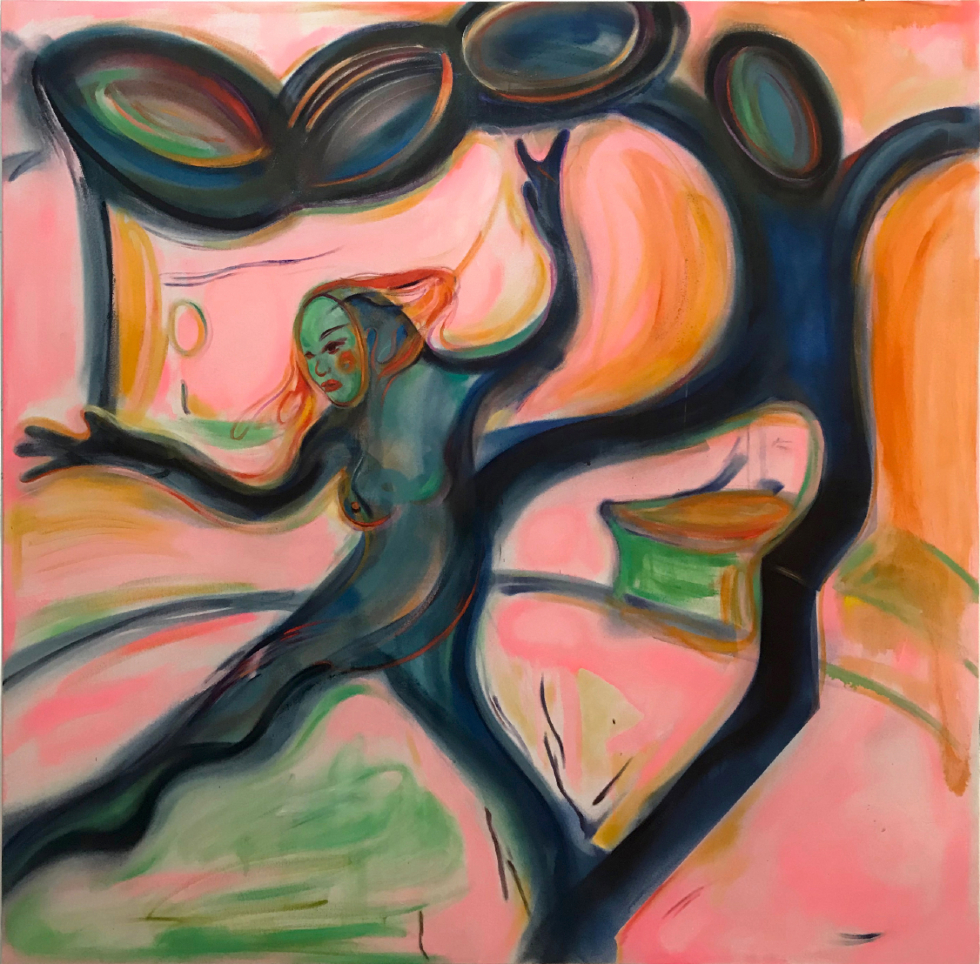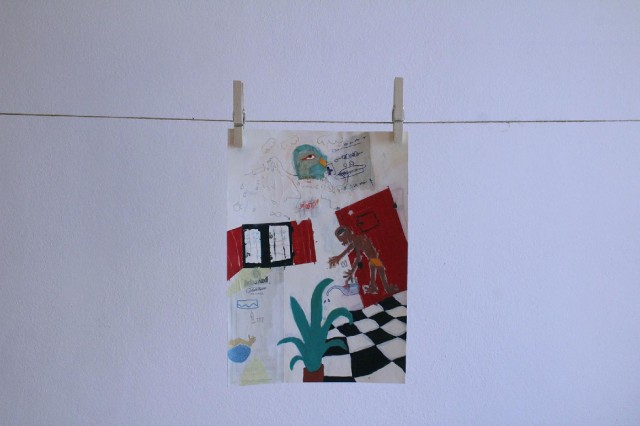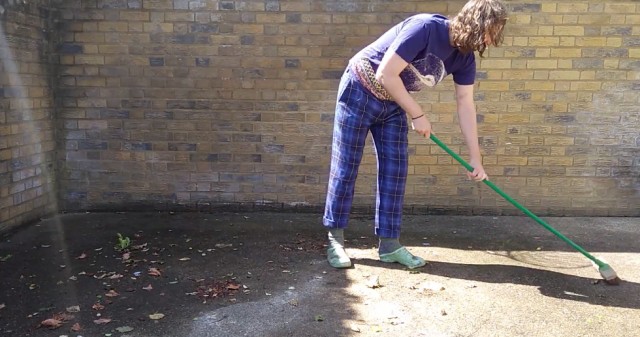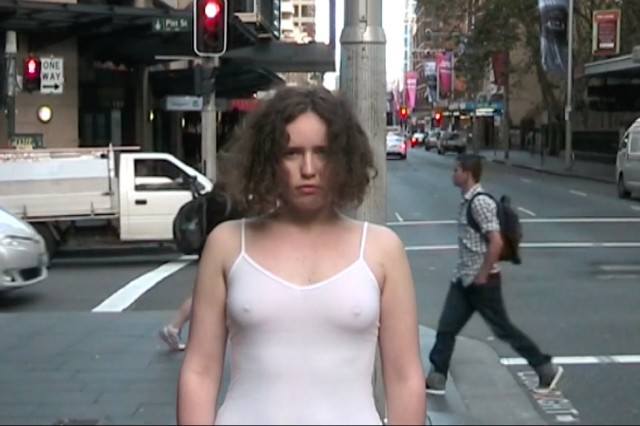Small Talk, My Animal – Reviewed “The domestic has always been a backstage to art”

“The strength of this exhibition lies in its artists’ confrontations of the intimacy of home.” Nina Hanz reviews online exhibition, Small Talk, My Animal…
I am writing this from the kitchen table, working from home or at least trying to; the radio – always a comfort – plays Joni’s Big Yellow Taxi and the dog rests at my feet. Like many others during the pandemic, I left the city just prior to lockdown for my family home; in my case, to stay with my mother in Essen, Germany. The reasons: a laundry list, financial pressures, health concerns, worries for my single mother, the sheer pleasure of having a garden. And so, my life in London dissolved, evaporated into a cloud of vapour and anxiety. Don’t it always seem to go that you don’t know what you’ve got til it’s gone.
The city – as we knew it – is gone and, now more than ever, I find myself looking back, living life in retrospect, passing time by returning to the past. And I feel seen, reminded that I am not alone, by the eleven artists of online exhibition Small talk, my animal. This group show, curated by Molly Morphew, reminds us that such reflections seem to be universal, shared by those who have been given time to think and make, to gaze out of our respective windows into a literal and figurative morning haze.
I have returned often to its landing page, a shade of green not dissimilar to my mom’s lawn. The sounds of birds chirping from my laptop not unlike the assortment of countryside sky-dwellers outside the window across from me. In my robe, shoeless, I move through the exhibition, into another room; familiar but still transporting. Scrolling has begun to feel more like walking, my pointer finger running the trackpad; clicking through, passing the artists’ earlier works, it is as if I too were returning to their origins – homebound. ‘In a world addicted to the new, we have decided to look forward by settling inside’ writes artist Fiona Glen in the introduction text.
Even as our relationship to time and how we perceive it has shifted, there seems to be a correlation between the past and home, homecomings. Artworks dated 2016, 2013, 2018, and even the few dated 2020, now feel like they could have been completed a lifetime ago. An instance of reunion, a welcome back, I’ve missed you. Like my own return, I view these works with the comfort of a dog’s wiggle, a tail wagging, a door opening.

But this, my return and that of the artists, is more than just a homecoming, it is a home-stay. You might not have locked the door, but our worlds have gone from open to closed and the familiar sidewalk allotted for my dog walks feels more like an extension of your home than a journey outside or around the city. The domestic space has never been more scrutinized, observed, wondered about than right now from my kitchen table. And yet I am still amazed by the beauty of the interior space, the whimsical brushstrokes and crayon-like textures in the artworks in this exhibition.
Like those hung from a clothesline, by Maria Goes (above). Tracing the figures with my cursor, I memorise the chessboard floors and the big aloe vera of a piece called Berliner (2018) as if they were my own. Mixed media, movement, the small logo of a pilsner, they all make the domestic setting vibrant and lively. A half-naked figure waters a plant – now, aren’t we all doing the exact same thing?
The domestic landscape has always been a backstage to art: a reclining nude, a kitchen table, the view of a balcony. It is an exploration of privacy, of identity. But the strength of this exhibition, its importance, comes with the confrontation, the intimacy of each artist’s interpretation of home, of their past. And how the past has a pull – like gravity. In Robin Leverton’s 2019 work, Clearing for a Collapse (below), it – gravity – is listed like a material besides ‘broom’ and ‘human body’. It lasts only 24 seconds and I make Leverton fall and fall and fall again as I replay the video.
It begins to feel like a game, the brick walled courtyard and the cement yard an unmoving mass for the soft body. ‘Go home, you’re drunk’ repeats in my mind, a phrase I always said lightly, jokingly, before the idea of home became smaller, more finite. Falling, such a familiar action, or is it an in-action? Regardless, a return more reliable than flight. The broom, an object of labour; as is the boy.

Nastaran Shahbazi’s Dancer and the Pink Room (top), made this year, has a similar sense of movement, a painted choreography, a figure’s familiarity we know only from repetition, the habitual, our habitat. They paved paradise and put up a parking lot. My dog knows when we are on our way home from the tarmac. He’s a homebody, likes the return more than the leaving, than the walk. The leash, usually loose, becomes taught as he pulls me home to my mother dancing in the kitchen, pancakes in the air. Not a pink room, but close enough.

And so too I return to Molly Morphew’s work. I know her as a painter, but in the exhibition she is a performer as well. Looking at her 2014 piece, Still Human (above), I watch her watching me (the camera) on a busy street in London. The sound of birds is now replaced by a motorcycle revving at a red light. Cars and people pass as she stands in a white nightgown, in daylight, outside, her hair frizzing in the city’s humidity. She remains at an arm’s length away from the fast-moving cars, this distance from (her proximity to) danger feels now like a foreshadowing of the two metres’ distance I keep from my neighbours.
A residential street, now suddenly tense, a taught leash. Molly Morphew is in a nightgown, I am in my robe. A bucket of water soaks Morphew, but I stay dry, watching through the laptop monitor. Only then, as she begins to walk, do I notice she too is barefoot and Big Yellow Taxi still playing on the kitchen radio. What I find so important about Still Human is the contrast, the gentle body and solid cars. Like an upbeat song with a sinister message – They took all the trees and put ‘em in a tree museum – Morphew brings the private into the public, laying bare the hostility, but also its intimacy. A paradise to some, but a parking lot to others.
Nina Hanz
Small Talk, My Animal continues online until 10 June
Images, from top: Nastaran Shahbazi, Dancer and the Pink Room (2020); Maria Goes, Berliner (2018); Robin Leverton, Clearing for a Collapse (2019); Molly Morphew, Still Human (2014)





